Today Current Affairs: 16th January 2022 for UPSC IAS exams, State PSC exams, SSC CGL, State SSC, RRB, Railways, Banking Exam & IBPS, etc
Table of Contents
Free Trade Agreement (FTA):
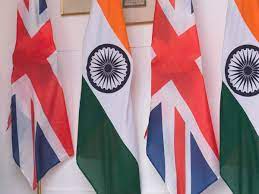
India and the UK have launched the formal Free Trade Agreement (FTA) negotiations, that both countries envisage concluding by the end of 2022.
- Until then, both countries are contemplating an interim free trade area, which will result in reducing tariffs on most of the items.
- Both countries agreed to an early harvest scheme or a limited trade agreement to lower tariffs on a small set of goods apart from easing rules for select services.
- Further, they agreed to avoid “sensitive issues” and focus on areas where there is more complementarity.
- The agriculture and dairy sectors are considered sensitive sectors for India in trade talks.
- Also, a target of doubling the trade between India and the United Kingdom (UK) by 2030 has also been set.
Free Trade Agreement (FTA):
- It is a pact between two or more nations to reduce barriers to imports and exports among them.
- Under a free trade policy, goods and services can be bought and sold across international borders with little or no government tariffs, quotas, subsidies, or prohibitions to inhibit their exchange.
- The concept of free trade is the opposite of trade protectionism or economic isolationism.
- FTAs can be categorised as Preferential Trade Agreement, Comprehensive Economic Cooperation Agreement, Comprehensive Economic Partnership Agreement (CEPA).
Fisheries Startup Grand Challenge:

The Department of Fisheries, Ministry of Fisheries, Animal Husbandry & Dairying In association with Startup India, the Ministry of Commerce and Industry inaugurated the Fisheries Startup Grand Challenge.
- The challenge has been launched with an objective to provide a platform to start-ups within the country to showcase their innovative solutions within the Fisheries and Aquaculture sector.
- The solutions should be devised for resolving issues across the fisheries value chain for increasing aquaculture productivity from the current national average of 3 tons to 5 tons per hectare, doubling exports earnings and reducing post-harvest losses from 25% to 10%.
- The challenge is expected to foster start-up culture within the sector and to establish a strong foundation of the entrepreneurial model, the Department of Fisheries has earmarked funds to the tune of Rs. 3.44 Crore for the challenge.
Solar Waste:
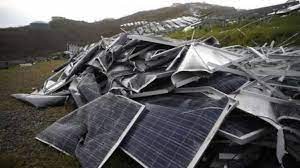
According to a report by the National Solar Energy Federation of India (NSEFI), India could generate over 34,600 tonnes of cumulative solar waste in India by 2030.
- India does not have a solar waste management policy, but it does have ambitious solar power installation targets.
- NSEFI is an umbrella organisation of all solar energy stakeholders of India. Which works in the area of policy advocacy and is a National Platform for addressing all issues connected with solar energy growth in India.
- Solar wastes are the electronic waste generated by discarded solar panels. They are sold as scrap in the country.
- It can increase by at least four-five-fold by the next decade. India should focus its attention on drafting comprehensive rules to deal with solar waste.
- It is likely that India will be faced with solar waste problems by the end of this decade, and solar waste will end up being the most prevalent form of waste in landfills soon.
- Solar panels have a life of 20-25 years, so the problem of waste seems distant.
- While photovoltaics generate only about 3 % of global electricity, they consume 40 % of the world’s tellurium, 15 % of the world’s silver, a substantial chunk of semiconductor-grade quartz and lesser but still significant amounts of indium, zinc, tin and gallium.
- The market value of raw materials recovered from solar panels could reach USD 450 million by 2030.
- The value of recoverable materials might surpass USD 15 billion by 2050, which would be enough to power 630 GW with two billion solar panels.
- Globally, it is expected that End-of-Life (EoL) of solar panels will drive the solar panel recycling business in the next 10-20 years.
Kala Kumbh:
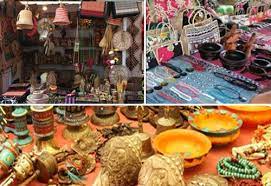
As part of grand celebrations of the Amrit Mahotsav, the Ministry of Culture in collaboration with the Ministry of Defence organized Kala Kumbh – artist workshops for painting scrolls.
- The Director General, NGMA (National Gallery of Modern Art) along with professors of eminent universities acted as mentors for the scroll painting workshops.
- The major theme of these artworks is on the unsung heroes of the struggle for India’s freedom.
- Inspiration has also been drawn from the illustrations in the Constitution of India which have been meticulously done by Nandalal Bose – one of the leading masters of modern Indian art from the Bengal School along with a team of other eminent artists and calligraphers.
National Gallery of Modern Art:
- It is a national premier Institute that was established in 1954 by then vice-president Dr. S Radhakrishanan in the presence of Prime Minister Jawaharlal Nehru.
- NGMA is a repository of the cultural ethos of the country and showcases the changing art forms through the passage of the last hundred and fifty years starting from about 1857 in the field of Visual and Plastic arts.
- Headquarters: New Delhi.
- Nodal Ministry: It is run and administered under the Ministry of Culture.
Baricitinib And Sotrovimab Drugs For Treatment Of Covid-19:
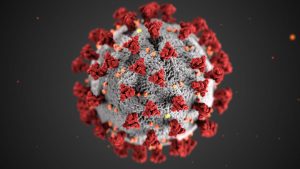
The World Health Organization (WH0) has recommended two drugs, baricitinib and sotrovimab, for treatment of Covid-19.
Baricitinib:
- Baricitinib, which is also used to treat rheumatoid arthritis, has been “strongly recommended” for patients with severe or critical Covid-19 in combination with corticosteroids.
- It is part of a class of drugs called Janus kinase (JAK) inhibitors that suppress the overstimulation of the immune system.
- It is an oral drug, and provides an alternative to other arthritis drugs called Interleukin-6 receptor blockers, recommended by WHO in July 2021.
Sotrovimab:
- Sotrovimab, developed by GlaxoSmithKline with US partner Vir Biotechnology Inc, is an investigational monoclonal antibody for use in treating conditions caused by coronavirus.
- The WHO has conditionally recommended its use for treating mild or moderate Covid-19 in patients who are at high risk of hospitalisation.
- These include patients who are older, are immunocompromised, and have underlying conditions like diabetes, hypertension and obesity, and are unvaccinated.
- The US Food and Drug Administration (FDA) too has approved an emergency use authorization (EUA) for the therapy for the treatment of mild to moderate Covid-19 in patients above 12 years.
The Siachen Glacier:
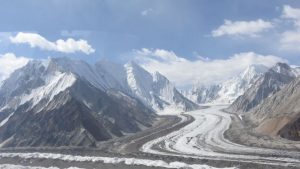
We are “not averse” to demilitarisation of the Siachen glacier but the pre-condition is Pakistan has to accept the Actual Ground Position Line (AGPL), Army chief General Manoj Naravane said.
- The Siachen Glacier is a glacier located in the eastern Karakoram range in the Himalayas, just northeast of the point NJ9842 where the Line of Control between India and Pakistan ends.
- The glacier lies between the Saltoro Ridge immediately to the west and the main Karakoram range to the east.
- The Saltoro Ridge originates in the north from the Sia Kangri peak on the China border in the Karakoram range.
- The entire Siachen Glacier, with all major passes, is currently under the administration of India since 1984. Pakistan controls the region west of Saltoro Ridge, far away from the glacier.
- The glacier’s melting waters are the main source of the Nubra River in the Indian region of Ladakh, which drains into the Shyok River.
- The Shyok in turn joins the 3000 kilometre-long Indus River which flows through Pakistan. Thus, the glacier is a major source of the Indus.
- At 76 km long, it is the longest glacier in the Karakoram and second-longest in the world’s non-polar areas.
- Siachen and Sir Creek have long been termed “low hanging fruits” in the past for resolution between India and Pakistan and the two countries have held 13 rounds of Defence Secretary-level talks on Siachen, the last one in June 2012.
Katrol Hill Fault:
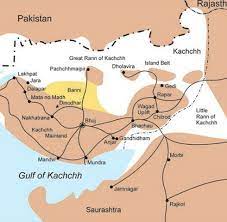
Major earthquake events in last 30,000 years resulted in spectacular changes in landscape of the Katrol Hill Fault in the Kachchh region in Gujarat, a study conducted on sediment samples revealed.
- Seismicity in Kachchh region is highly complex as it is characterized by multiple seismic sources in the form of several East-West trending fault lines, which release continuously accumulating tectonic stresses at intervals producing earthquakes.
- Real-time monitoring of earthquakes since the occurrence of devastating 2001 Bhuj earthquake indicate that most of the faults in the region, viz., Kachchh Mainland Fault (KMF), South Wagad Fault (SWF), Gedi Fault (GF), and Island Belt Fault (IBF) are seismically active.
- However, seismic activity along other faults like the Katrol Hill Fault (KHF) is not apparent, thus making the task of seismic hazard estimation and mitigation in the region a scientifically complex process.




